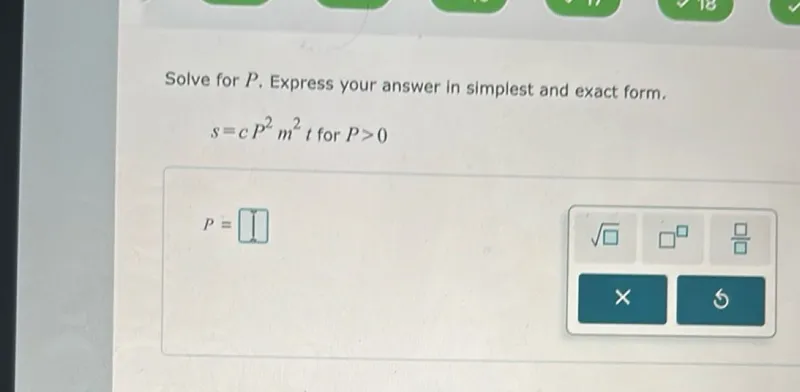Solve for \( P \) in the equation \( s = c P^{2} m^{2} t \).
Rearranging the equation.
To isolate \( P \), we can rearrange the equation as follows:
\[
P^{2} = \frac{s}{c m^{2} t}
\]
Taking the square root of both sides.
Since \( P > 0 \), we take the positive square root:
\[
P = \sqrt{\frac{s}{c m^{2} t}}
\]
\(\boxed{P = \sqrt{\frac{s}{c m^{2} t}}}\)
Express \( P \) in terms of \( m \) using the inverse function.
Identifying the inverse function.
The inverse function derived from the equation is:
\[
s^{-1}(m) = \pm \frac{\sqrt{\frac{m}{c t}}}{P}
\]
Expressing \( P \) in terms of \( m \).
From the inverse function, we can express \( P \) as:
\[
P = \frac{\sqrt{\frac{m}{c t}}}{s^{-1}(m)}
\]
\(\boxed{P = \frac{\sqrt{\frac{m}{c t}}}{s^{-1}(m)}}\)
\(\boxed{P = \sqrt{\frac{s}{c m^{2} t}}}\)
\(\boxed{P = \frac{\sqrt{\frac{m}{c t}}}{s^{-1}(m)}}\)






